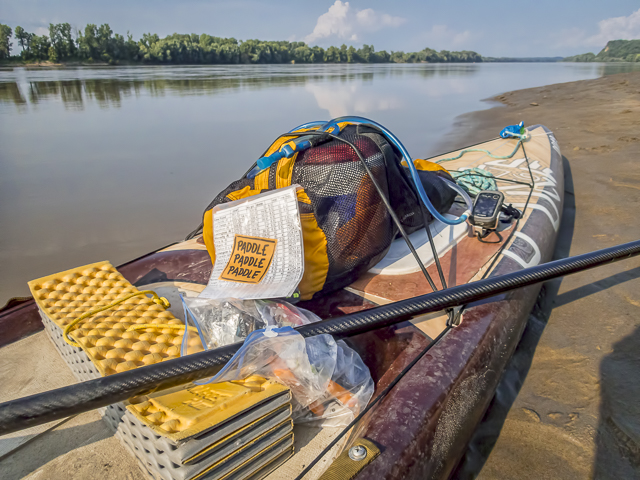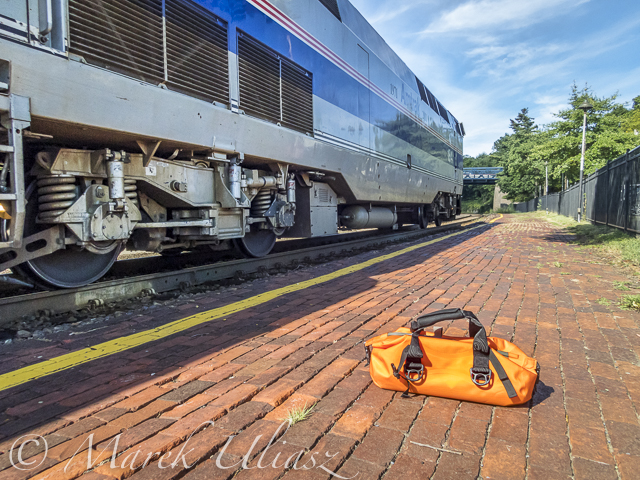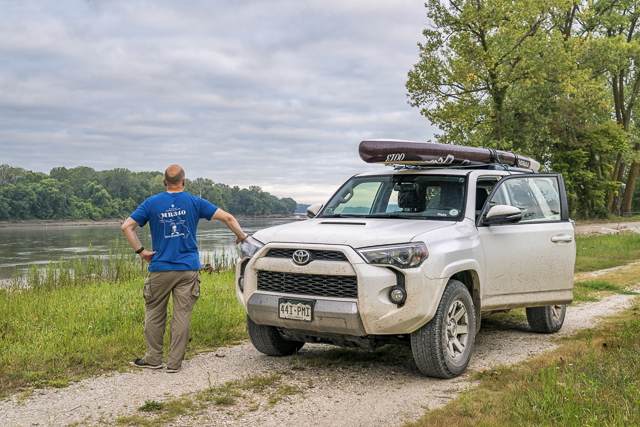If you are a first-time visitor, let me introduce you to the Missouri River 340 (MR 340) – a long-distance paddling race that spans from Kansas City to St. Charles, covering a distance of 340 miles with a current time limit of 85 hours. There are several checkpoints with deadlines and numerous access points to the river, but no mandatory stops. Whether you choose to paddle non-stop or pause for rest and sleep is entirely up to you.
If you’re considering participating in the MR 340 race solo and self-supported, my experiences may prove useful. I have been a part of this race since its inception in 2006 and have paddled solo, finishing the race 11 times. I also paddled the race course during a flooding stage when the event was rescheduled. Although I started the race with a land crew, I completed my last eight races unsupported, using Amtrak train for shuttle services.
My last racing season was 2019 and my goal for 2023 is to return back to river racing with the MR 340 being the main event on my calendar.

Tracking device
Can you enter the race self-supported? Yes, there are some formal requirements. You need a digital assistance. I am not sure if a tracking device is still mandatory, but it’s good idea anyway. If your tracking device is working correctly you do not need to do any checking at checkpoints. I’ve been using my old Spot-x device for years, but there are newer models available including 2-way GPS messenger.
Self support levels
There are several levels of unsupported participation in the MR 340 race, each with varying degrees of assistance:
- Fully unsupported race: You drive to/from the race on your own, have no land crew during the race, and shuttle back on your own. This is the approach I take.
- Partially unsupported race: Someone drives you to the race start and picks you up from the race finish.
- Semi-supported race: You don’t have a land crew, but they are available on call to meet you at a predetermined location if necessary. This approach may be suitable for local paddlers.
Shuttle Between St Charles and Kansas City
The most significant challenge with self-supported participation in the MR 340 race is shuttling. Driving by car between Kaw Point in Kansas City and St Charles covers about 230 miles and takes 3.5 hour or longer depending on a traffic. In the history of MR340 some paddlers carried bikes and carts on their kayaks and then pedaling home along the KATY trail after the race. However, I believe they didn’t cycle all the way back to Kansas City.

For my plan I need to reserve hotels at the start and finish within a walking distance. Expensive! I am leaving my car in Kansas City, KS at a hotel parking. Now, it comes the fun part: I paddle the race. But … I need to finish the race in about 60 hours or less to arrive at St Charles on Thursday evening. If I am late I may have to reschedule my train travel which complicates things a little bit. I am sleeping in a hotel, and next morning I am taking a cab to catch Amtrak Missouri River Runner at Kirkwood station (next stop after St Louis). Some napping on a train and 5-6 hours later I am taking another cab in Kansas City to recover my car, and to drive back to St Charles. While I may or may not arrive in time for the award ceremony, I still have a chance to meet fellow racers.
I described my MR340 shuttle operation in previous posts including exact timing for 2010 race. Walking between Hilton Garden Inn and the race start at Kaw Point is pretty short and nice today. In early race years it was longer and required walking on a busy highway.
Safety considerations
When it comes to safety, paddlers are relatively secure on the water with hundreds of other paddlers and safety boats, as well as people at every possible boat ramp. There is no more danger than if you have a land crew. Typical hazards such as passing barges, storms, or fog are the same. However, one essential role of the land crew is missing: they can assess your well-being, instruct you to drink or eat, force you to rest, assist with sickness or injuries, provide encouragement, and help you make decisions about your race strategy. Paddling without assistance you have to do all these tasks and decisions by yourself and your diminished mental capacity during the race may eventually impact your safety.
Supplies
You need to carry all your gear and food supplies except water. Getting cold water or other drinks along the race course is not difficult nowadays, but it takes time. Packing all supplies on my expedition canoe is not problem, but requires careful planning in the case of skinny racing kayak or stand up paddleboard.
Refilling your water jugs or bladders with sports and energy drinks may present challenges without a ground crew. You may not have enough time or resources to thoroughly rinse and clean them, which could pose a health hazard if you’re making your drinks in dirty containers every 10-12 hours in hot temperatures. In recent races I was using just water with electrolytes in my containers. It was easier to rinse them that to clean them after sticky sport drinks. I was making sport drinks from powder only in small amounts in one-use collapse bottles. Otherwise, I was relying on gels or solid food and bottled drinks.
Are there any benefits of racing self-supported?
One benefit is that you don’t need to worry about your ground crew getting lost, being late, or running into any issues. You also have the flexibility to paddle at your own pace and aren’t required to stop at prescribed meeting points.
Quitting is not an option! As soon as I launched my boat at Kaw Point I have to paddle to the finish line at St Charles. If I get sick or injured I must rest and recover on my own and continue to paddle or float to the finish. Only a hospital type emergency can take me off water. Pacing yourself, hydration, resting, sleeping are getting much more important if you are racing unsupported.
Driving
Long distance driving to or from the race is much more fun with a good company. However, as a photographer I am able to find some local attractions to explore photographically even in the middle of Kansas or Nebraska. And, a long driving is a great occasion to listen to audiobooks. I used to listen to many self help books. Da Vinci Code and other Dan Brown’s thrillers kept me awake when driving longer sections.

I didn’t paddle the race in the middle of COVID pandemic due to my safety consideration in hotels and public transportation. Also, Amtrak reduced frequency of their service. However, this would not have been an issue if I was traveling with a ground crew and enjoy car camping.
I wouldn’t recommend to paddle without support for first timers unless you have experience in expedition paddling or other long distance racing. At least you should consider to paddle some shorter races before MR340. Check racing event lists at Midwest Paddle Racing and MR340 website.
If you’re a competitive racer and have set your sights on winning or breaking a record, I trust that you know what you’re doing. Having a ground crew to support you can give you a significant advantage. Their assistance can help you focus solely on your paddling, allowing you to push your limits and achieve your goals.
If you have ever paddled the MR 340 race self-supported, I would love to hear about your experience. Please share your stories and any tips you may have in the comments section below. Let’s keep the conversation going and help others to take on this incredible challenge!
Related posts:
Paddling Against Time: My 2023 Challenge – Back to River Racing
You must be logged in to post a comment.